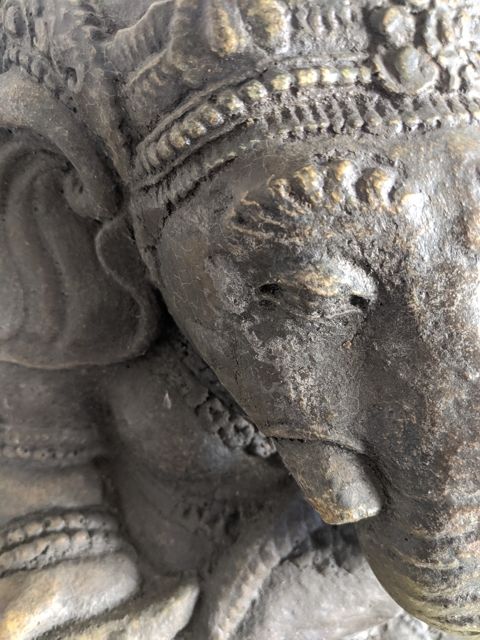A good rule to follow when it comes to starting a new practice of any kind, is to take it one day at a time. On some days, you may feel like meditation is frustrating, pointless or even boring, which is to be expected. However, with the right set of tools, you will know what to do and will be more inclined to practice meditating more often.




What comes to mind when you think of a yoga class? Is it students practicing yoga poses like Warrior Two, Triangle, or Downdog, or does it also include meditation?
It’s common for Western yoga classes to emphasize and glorify things like aesthetics, range of motion, and physical strength, while giving little attention to meditation. Because of this, people generally see yoga and meditation as separate disciplines. Meditation is actually part of yoga, one of its eight limbs, and our Western idea of yoga is actually mostly asana (yoga postures). Meditation and asana are two spokes on the same yoga wheel, deeply interconnected and integral to one another.
This post goes over the symbiotic relationship between asana and meditation, and how to unlock the transformative power they hold when they’re practiced together. Whether you’re new to yoga or looking to go a little deeper in your sādhana (practice), understanding and integrating these elements can greatly enhance your personal growth and self-discovery.
Yoga is the practice of connecting the mind to the body, breath to movement, and ourselves to our true nature, or any higher power we believe in. The practice of asana that most of us consider to be “yoga” has taken center stage mostly because of its health benefits and impressive postures.
Working to achieve these postures is all well and good, however when you add a more mindful spin on your practice, it can transform your yoga class from a series of physical movements into a profound, multidimensional experience. Incorporating meditation into your sādhana deepens the mind-body connection, improves concentration and focus, heightens sensory awareness, adds spiritual depth and increases relaxation and overall well-being.
In addition to all of the cognitive benefits of meditation, it also does a great job of improving your asana practice by strengthening your mental awareness of your pose alignment, helping make each movement more intentional, effective, and safe.
I didn’t know this until I attended my first yoga teacher training, but the original purpose of practicing asana is to build physical strength, flexibility, and balance, making it possible to sit comfortably for extended periods of time. It is intended to work alongside all of the other limbs of yoga, and not necessarily be the one and only focus. In ancient texts like the Yoga Sutras, asana is mentioned as one of the eight limbs of yoga, where it serves the function of creating a stable and comfortable seat (sthira sukham asanam) for meditation. And that this physical preparation is essential to achieve the primary goal of yoga — spiritual growth and self-realization.
Embracing the interconnectedness of meditation and asana opens doors to a richer, more profound yoga practice. By weaving mindfulness into your physical movements, we unlock the transformative power of yoga, nurturing not only your body, but also your mind and spirit. Read on to discover ways that you can deepen your mental and spiritual engagement of your asana practice by integrating meditation.
4 Ways to Integrate Meditation into Asana Practice

1. Begin Your Yoga Practice with Intention Setting
At the beginning of your yoga session, take a few moments to set an intention. This can be a simple goal or focus for your practice, such as cultivating gratitude, patience, or self-love. This intention will guide your practice and provide a focal point during meditation.
2. Use Breath Awareness as a Bridge
Throughout your yoga practice, focus on your breath. Use each inhale and exhale to anchor your awareness. This mindful breathing creates a natural transition into meditation, as you are already tuned into the rhythm of your breath.
3. Incorporating Meditation into Asanas
Choose a few key poses to hold for an extended period of time and use them as opportunities for meditation. For example, in poses like Child’s Pose (Balasana) or Seated Forward Bend (Paschimottanasana), close your eyes and focus on your breath or your intention. This practice helps integrate meditation into the flow of your yoga session.
4. End with a Dedicated Meditation Session
After completing your yoga asanas, take a few minutes of stillness either before or after savasana, and bring your mind to a one-pointed-focus. While seated or lying down, close your eyes and focus on your breath, a mantra, or a guided meditation. Including a final meditation will help you better absorb and integrate the benefits of your yoga practice, allowing for deeper reflection and healing.
You don’t need to seek anything outside of yourself to take your practice to the next level.
Tips for a More Seamless Integration
To make the integration of yoga and meditation more effective, consider the following tips.
Create a Consistent Routine
Consistency is key to reaping the benefits of yoga and meditation. Set aside a specific time each day for your practice, even if it’s just a few minutes. Over time, this routine will become a natural part of your day.
Use Guided Meditations
If you’re new to meditation or find it challenging to focus, consider using guided meditations. There are many apps and online resources that offer guided sessions specifically designed to complement your yoga practice.
Focus on the Present Moment
During both yoga and meditation, aim to stay present. Notice the sensations in your body, the rhythm of your breath, and the thoughts that arise without judgment. This mindful awareness enhances the connection between your physical and mental practices.
Practice Self-Compassion
Be gentle with yourself as you integrate these practices. Some days may be easier than others, and that’s okay. Approach your practice with kindness and patience, acknowledging that it’s a journey of growth and self-discovery.
Final Thoughts
Incorporating more mindful meditation in your yoga practice can transform your whole experience both on and off the mat. Naturally, the more you practice, the more you’ll find the powerful combination of meditation and asana elevates your yoga practice, but enriches your entire life.




